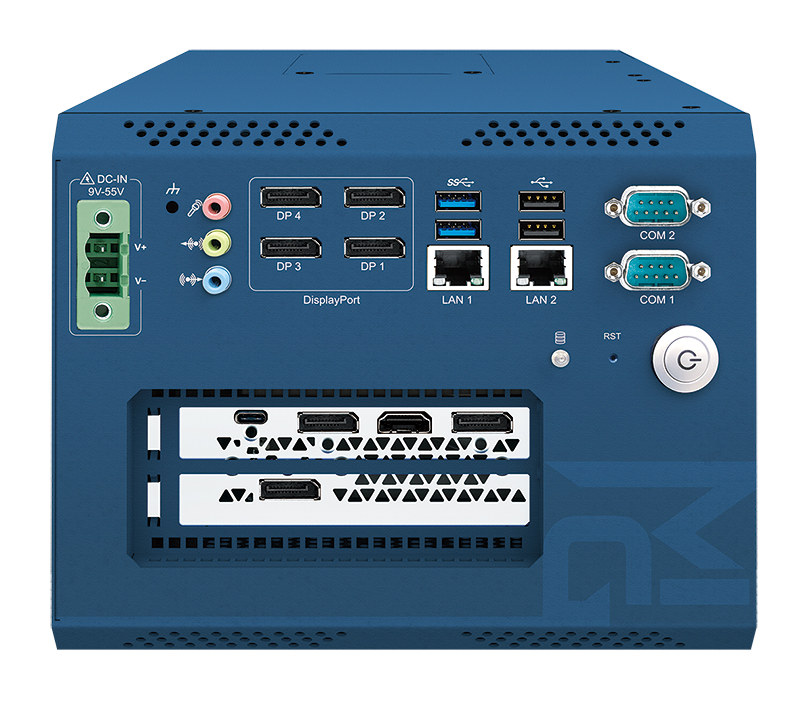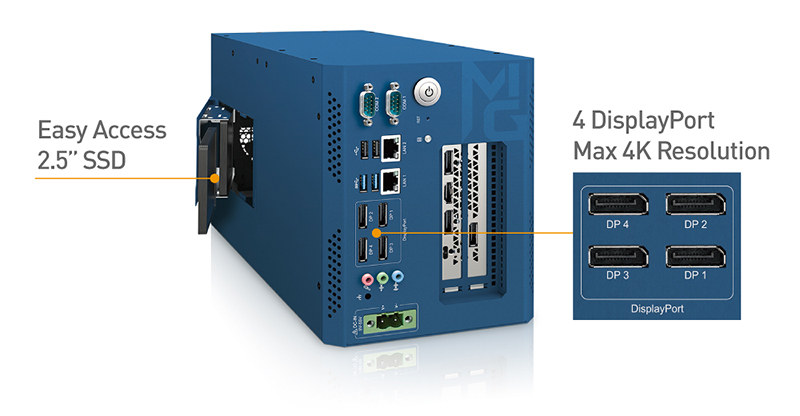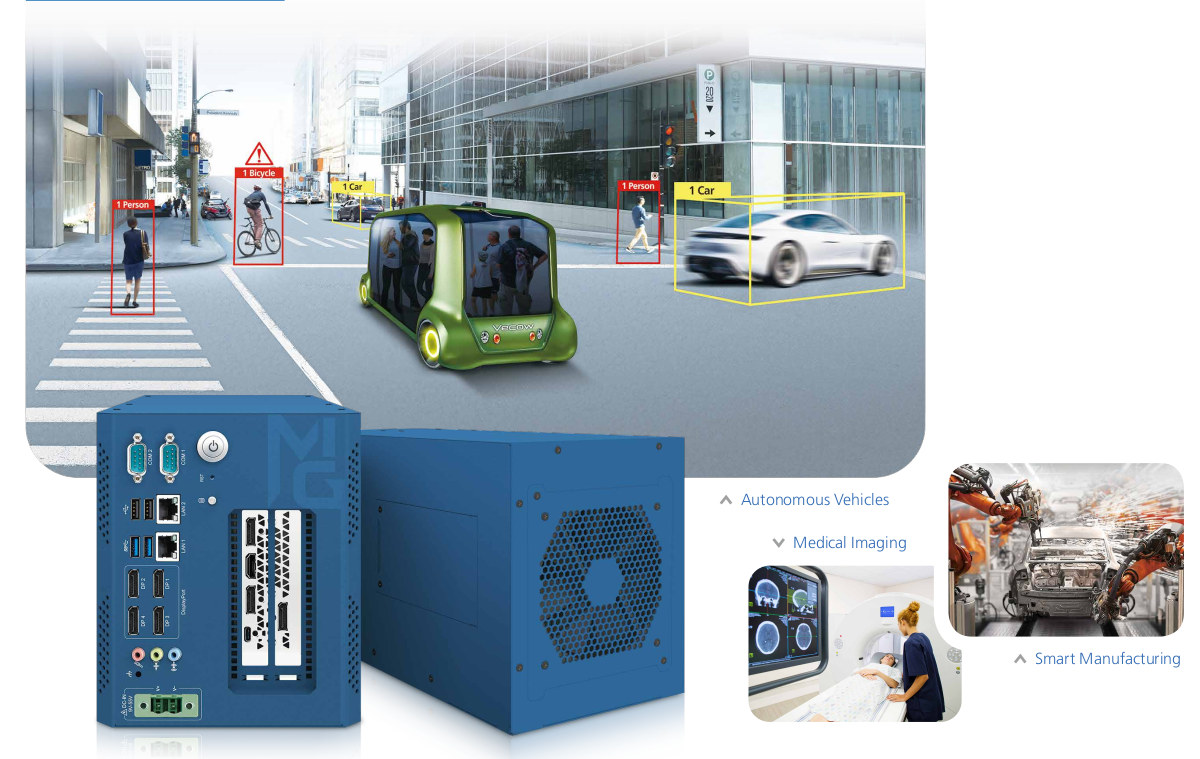Many AI edge computers come with dedicated AI accelerators from Intel, Google, Gyrfalcon, and others. But as we’ve seen with Cincoze GM-1000 embedded mini PC, some include support for more traditional GPUs, in this case, an NVIDIA Quadro Embedded P2000 MXM module.
Ryzen Embedded V1807B powered Vecow MIG-1000 AI edge PC is another such solution with up to 64GB DDR4, four DisplayPort outputs, and a PCIe x16 slot for dual-slot graphics cards from Nvidia or AMD for AI processing performance and/or extra video outputs.

- SoC – AMD Ryzen Embedded V1807B quad-core processor with Radeon Vega 11 graphics; 35-54W TDP
- System Memory – 2x DDR4 3200MHz SO-DIMM, up to 64GB
- Storage – 1x SATA-III port, 1x M.2 Key M socket (2280, PCIe x4) for NVMe SSDs
- Video Output – 4x DisplayPort up to 4096 x 2160 @ 60Hz
- Audio
- Realtek ALC662, 5.1 Channel HD Audio codec
- 1x Mic-in, 1x Line-out, 1x Line-in jacks
- Networking – 2x Gigabit Ethernet ports via Realtek RTL8111G GbE controllers
- USB – 2x USB 3.0 ports, 2x USB 2.0 ports
- Serial – 2x COM RS-232 ports
- Expansion – 1x PCIe x 16 Slot with support for dual-slot graphics cards
- Misc – Power, HDD LEDs, HW monitor (temperature, voltages. Auto throttling control when CPU overheats)
- Power Supply – 9V to 55V DC via 2-pin terminal block up to 750 Watts
- Dimensions – 162.6 x 203.6 x 385.0mm
- Weight – 5.3 kg
- Temperature Range – Operating: 0°C to 60°C; storage: -40°C to 85°
- Humidity – 5% to 95% Humidity, non-condensing
- Shock/Vibration
- IEC 61373 – 2010
- Railway applications – Rolling Stock Equipment, Shock and Vibration Test
- EMC – CE, FCC, EN50155, EN50121-3-2

Vecow MIG-1000 is more much powerful and power-hungry than solutions typically showcased on CNX Software. Yet it’s still decided to edge computing applications in autonomous vehicles, traffic vision, medical imaging, gaming, and AIoT/Industry 4.0 applications.
Vecow did not provide pricing nor availability for the MIG-1000. More details may be found on the announcement and product page.
Via LinuxGizmos

Jean-Luc started CNX Software in 2010 as a part-time endeavor, before quitting his job as a software engineering manager, and starting to write daily news, and reviews full time later in 2011.
Support CNX Software! Donate via cryptocurrencies, become a Patron on Patreon, or purchase goods on Amazon or Aliexpress





